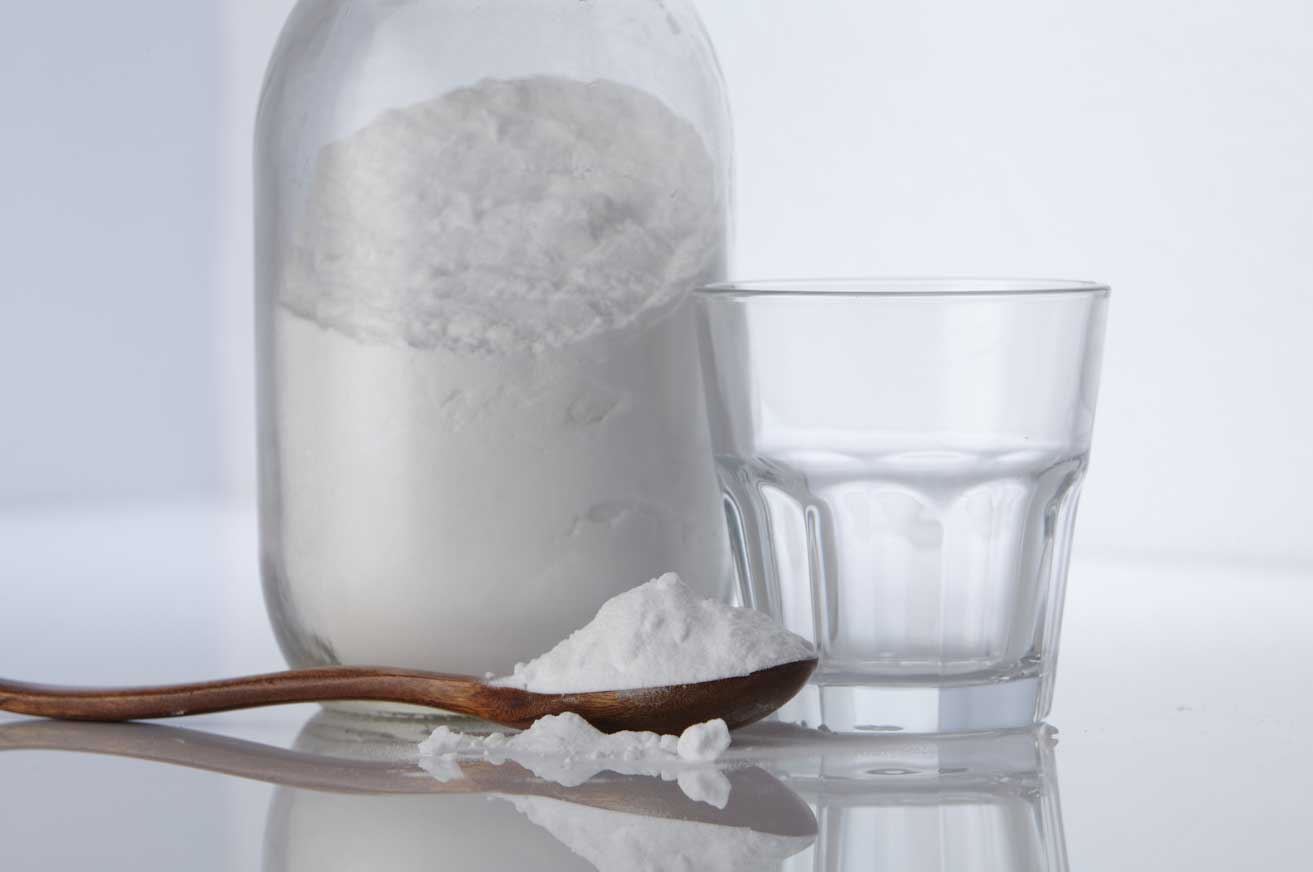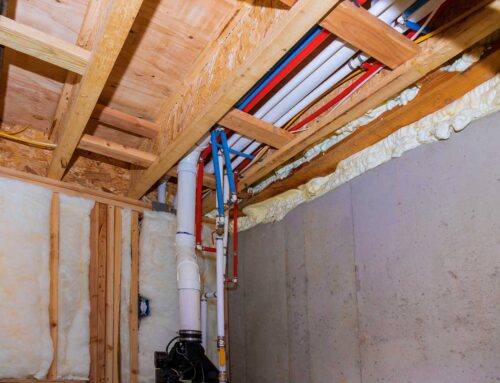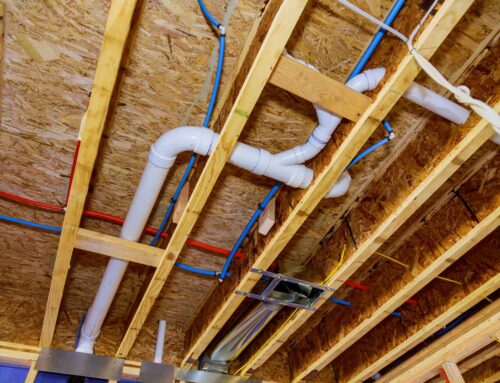When it comes to household mishaps, a clogged toilet ranks high on the list of inconveniences. It’s a situation that can cause stress and frustration, but fear not! At KBR Plumbing, we understand the urgency of resolving this issue promptly, and we’re here to guide you through a simple and effective method using two common household items: baking soda and vinegar. In this post you will learn how to unclog a toilet with baking soda and vinegar.
Why Baking Soda and Vinegar For a Clog?
Baking soda and vinegar are a dynamic duo that go beyond their culinary uses. They are powerful natural cleaners that can work wonders in unclogging toilets. Baking soda (sodium bicarbonate) is mildly abrasive and can break down gunk and debris, while vinegar (acetic acid) reacts with baking soda to create a fizzy foaming action that helps dislodge and dissolve stubborn blockages. It turns out baking soda and vinegar are pretty adept at unclogging a toilet and more family friendly and environmentally safe than chemical drain cleaners.
Step-by-Step Guide To Unclog A Toilet With Baking Soda and Vinegar
Step 1: Gather Your Supplies Before you begin to unclog your toilet, ensure you have the following items on hand:
- Baking soda
- Cup of Vinegar (or two)
- Dish Soap (optional)
- Rubber gloves (optional)
- Toilet plunger
- Hot water or Boiling Water
Step 2: Clear the Area Remove any objects around the toilet area to prevent accidental splashes during the unclogging process. This includes the bathroom floor.
Step 3: Baking Soda Application Start by pouring about one cup of baking soda into the toilet bowl. Aim for an even distribution across the water surface.
Step 4: Vinegar Application Next, pour one to two cups of white vinegar into the toilet bowl. Be prepared for the fizzing chemical reaction between the baking soda and vinegar. This reaction will help break down the clog.
Step 5: Let it Sit Allow the baking soda and vinegar mixture to sit in the toilet bowl for about 30 minutes to overnight depending on the clog. This waiting period gives the solution enough time to work on softening and dislodging the clog.
Step 6: Test the Water Flow While you’re waiting, carefully add hot water into the toilet bowl. The hot water can help further break down the clog and assist in unclogging the toilet. Make sure you pay attention to the water level. Do not flush at this stage. At this stage you may notice you have cleared the clog in the toilet without a plunger.
Step 7: Plunge After the waiting period, put on rubber gloves if you prefer, and use a toilet plunger to gently push and pull the water in the bowl. The combination of the baking soda, vinegar, and hot water, along with the plunging action, should help dislodge the clog.
Step 8: Flush and Repeat Once you’ve successfully unclogged the toilet with baking soda and vinegar, flush the toilet to ensure the water flows freely. You will see the water draining out of the bowl. This means the clog is cleared. If needed, you can repeat the process to ensure all remnants of the clog are completely cleared.
Preventing Future Clogs
To minimize the chances of future toilet clogs, consider adopting these preventive measures:
- Regular Maintenance: Make it a habit to clean the toilet in your home regularly to prevent build-up. Use a toilet brush and non-abrasive cleaning agents to keep your toilet in top condition.
- Flush Wisely: Teach household members to flush only toilet paper and waste. Avoid flushing items like facial tissues, wet wipes, and other non-flushable materials.
- Proper Toilet Paper Usage: Use only a reasonable amount of toilet paper per flush. Excessive toilet paper or too much toilet paper can contribute to clogs.
- Enzyme Cleaners: Consider using enzyme-based toilet cleaners periodically. These cleaners help break down organic matter and reduce the risk of clogs.
- Hair and Debris: Install drain screens or traps in your bathroom to catch hair and debris that might otherwise find their way into the toilet pipes.
When To Call A Professional Plumber
If the vinegar and baking soda isn’t working you should consider calling a professional plumber. Here are some other toilet issue instances to seek professional help.
Call a plumber when you notice frequent clogs: If you are dealing with a toilet clog more often than usual, then it is a clear indication that a plumber needs to take a look. Frequent clogs may indicate a more serious problem with your plumbing system, such as blocked pipes or damaged sewage lines.
Call a plumber when there’s no improvement with DIY approaches: If you have tried everything from using a plunger to a homemade drain cleaner and the clog persists, call a plumber. Continuing to use DIY remedies can make the problem worse or cause more damage to your toilet if the toilet remains clogged.
Call a plumber when there’s unusual behavior in your plumbing system: If water is not draining properly, or if there are gurgling sounds when you flush, it could mean that there is a blockage in the pipes. Call a plumber to inspect and resolve any underlying issues.
Call a plumber when there’s a sewage smell: If you notice a persistent sewage smell coming from your toilet or your plumbing system, it could mean that there is a serious problem with your sewage system. Sewage smells can be a sign of blocked pipes, damaged sewage lines or that the clog is severe, which require urgent attention.
Call a plumber when there’s flooding: If water is overflowing from your toilet or flooding your bathroom, it could mean that there is a blocked pipe or a damaged sewage line. Flooding can cause serious damage to your property and pose health risks. Call a plumber immediately to avoid further damage.
Call a plumber for preventive maintenance: Regular preventive maintenance can help you avoid costly repairs and prolong the life of your plumbing system. Schedule an appointment with a plumber to inspect your plumbing system and ensure that everything is in good working order.
Unclogging A Toilet Is Essential To Homeowners
When faced with a clogged toilet, the baking soda and vinegar method can be your go-to solution for a quick and effective fix. By following our step-by-step guide, you can tackle this household annoyance without the need for harsh chemicals or expensive plumbing services. Remember to prioritize preventive measures to keep your toilet functioning smoothly in the future.
If you’re looking for more expert tips on maintaining your plumbing and enhancing your home, don’t forget to explore our blog at KBR Plumbing. Our team of skilled professionals is dedicated to providing you with valuable insights and solutions to common household challenges. If you feel you need to call a plumber, we are available for even the most stubborn clog.
Q: How do I unclog a toilet?
A: There are several ways to unclog a toilet. One common method is to use a plunger to create suction and force the blockage through the drain. Another method is to use baking soda and vinegar to create a chemical reaction that can help break up the clog. You can also try using a plumbing snake to physically remove the blockage.
Q: Can I use baking soda and vinegar to unclog my toilet?
A: Yes, you can use baking soda and vinegar to unclog your toilet. Start by pouring one cup of baking soda into the clogged toilet. Then, pour one cup of vinegar into the toilet. Let the mixture sit for a few minutes, and then flush the toilet to see if the clog has been cleared.
Q: How does using baking soda and vinegar unclog a toilet?
A: The reaction between the vinegar and baking soda creates a fizzy chemical reaction, which can help break down the blockage in your toilet. This can make it easier to flush the clog away. Which means it’s successful to unclog a Toilet with Baking Soda and Vinegar.
Q: How long should I let the baking soda and vinegar mixture sit in the toilet?
A: It is recommended to let the mixture sit in the toilet for at least 30 minutes. This will give the baking soda and vinegar enough time to work on breaking down the clog.
Q: Can I use dish soap instead of vinegar?
A: While some people have had success using dish soap to help unclog their toilet, it is generally recommended to use vinegar for better results. Dish soap may not be as effective in breaking down the clog as vinegar.
Q: How much vinegar do you use to unclog a toilet?
A: You should pour one cup of vinegar into the clogged toilet. This should be enough vinegar to create the chemical reaction with the baking soda and help break up the clog.
Q: Can I pour more than one cup of vinegar into the toilet?
A: It is not necessary to use more than one cup of vinegar. Using excessive amounts of vinegar may not yield better results and can potentially cause damage to your toilet or plumbing system.
Q: Is it safe to flush the toilet after using baking soda and vinegar?
A: Yes, it is safe to flush the toilet after using baking soda and vinegar to unclog it. However, if the clog remains, you may need to repeat the process or try a different method to unclog the toilet.
Q: What if my toilet remains clogged after using baking soda and vinegar?
A: If your toilet remains clogged after using baking soda and vinegar, you can try using a plunger or a plumbing snake to physically remove the blockage. If these methods do not work, you may need to call a professional plumber to help unclog your toilet.
Q: Can I use baking soda alone to unclog my toilet?
A: While baking soda can help absorb odors and break down some types of blockages, it is generally recommended to use baking soda and vinegar together for better results when unclogging a toilet.





